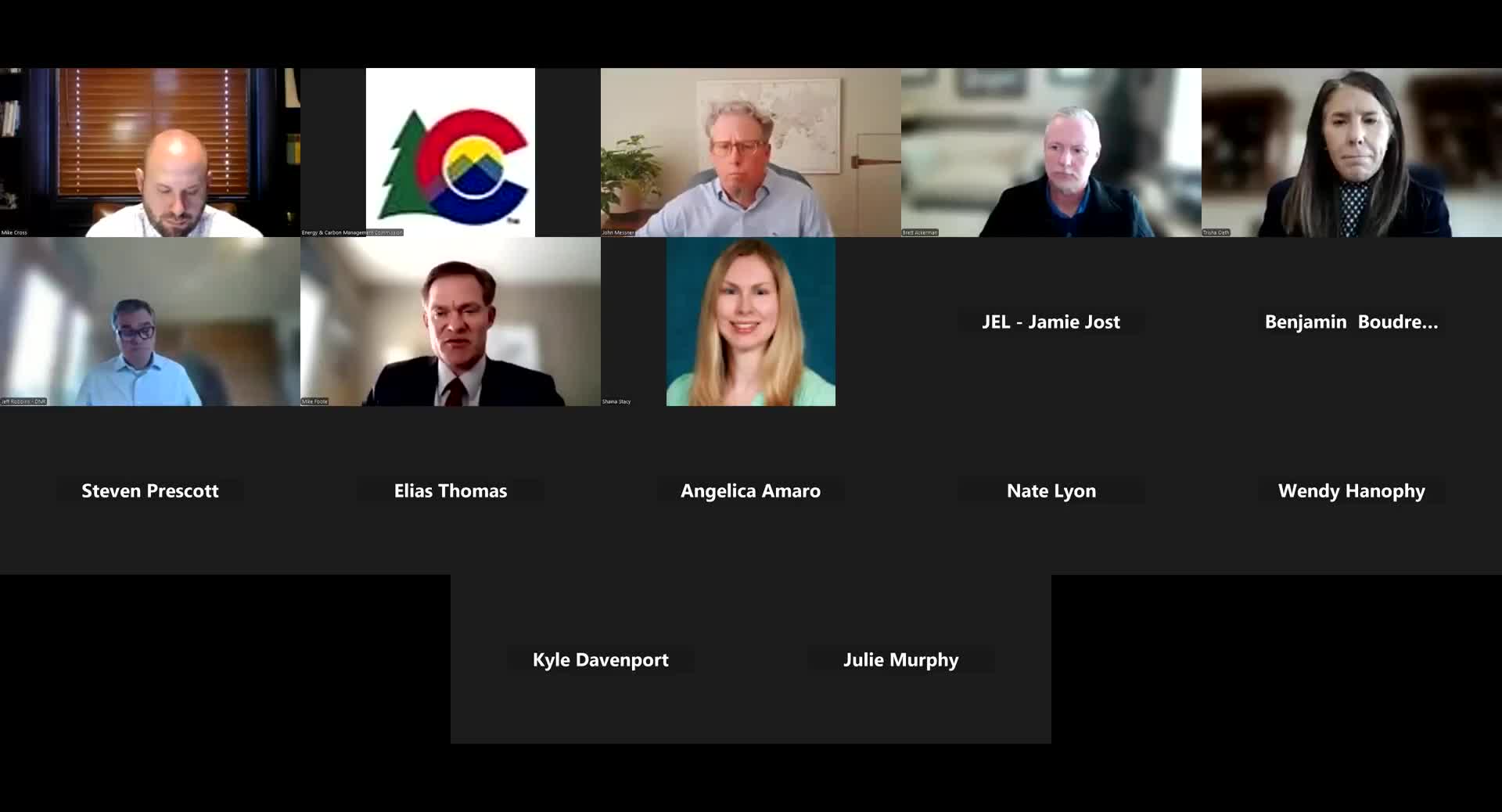Residents and STAR press emergency‑response, wildfire and alternative‑site concerns; Maverick raises subsurface drainage claim
November 26, 2025 | Energy and Mineral Impact Assistance State Advisory Committee, Governor's Boards and Commissions, Organizations, Executive, Colorado
This article was created by AI summarizing key points discussed. AI makes mistakes, so for full details and context, please refer to the video of the full meeting. Please report any errors so we can fix them. Report an error »

Community testimony and the parties' competing proposals framed much of the policy and procedural debate on Nov. 25.
Nathan Lyon (STAR volunteer and resident) described rapid suburban growth around the proposed pad since 2012 and said emergency-response travel times to the site could exceed 20 minutes, creating unacceptable wildfire and response risk for homes near Aurora Reservoir. He urged denial or relocation or at least a fuller alternative‑location analysis.
Maverick (intervenor) argued Crestone's proposed surface plan would preclude Maverick from developing its adjacent leases, creating drainage and a constitutional taking of property; Maverick asked the commission to expand the DSU to include its leases (an additional ~80 acres) or to split the DSU to avoid unfair drainage.
Crestone and its witnesses provided a voluntary alternative location analysis and rebuttal, arguing many alternatives conflict with reservoir setbacks, riparian buffers, wildlife constraints (swift fox den, raptor nests), and that some alternatives would cause greater haul‑route impacts and lost mineral recovery. Crestone asserted the Sunlight Long site meets ECMC and county requirements, complied with the Lowry Ranch cap order conditions, and that moving the pad would leave significant minerals undeveloped (Crestone estimated ~960 mineral acres, ~3% of their 32,000 acres in the cap, could be affected by some alternates).
Procedurally, commissioners voted to close the record for deliberation and scheduled an executive session and deliberations for Dec. 3, 2025. No final permit decision was made at the hearing.
Nathan Lyon (STAR volunteer and resident) described rapid suburban growth around the proposed pad since 2012 and said emergency-response travel times to the site could exceed 20 minutes, creating unacceptable wildfire and response risk for homes near Aurora Reservoir. He urged denial or relocation or at least a fuller alternative‑location analysis.
Maverick (intervenor) argued Crestone's proposed surface plan would preclude Maverick from developing its adjacent leases, creating drainage and a constitutional taking of property; Maverick asked the commission to expand the DSU to include its leases (an additional ~80 acres) or to split the DSU to avoid unfair drainage.
Crestone and its witnesses provided a voluntary alternative location analysis and rebuttal, arguing many alternatives conflict with reservoir setbacks, riparian buffers, wildlife constraints (swift fox den, raptor nests), and that some alternatives would cause greater haul‑route impacts and lost mineral recovery. Crestone asserted the Sunlight Long site meets ECMC and county requirements, complied with the Lowry Ranch cap order conditions, and that moving the pad would leave significant minerals undeveloped (Crestone estimated ~960 mineral acres, ~3% of their 32,000 acres in the cap, could be affected by some alternates).
Procedurally, commissioners voted to close the record for deliberation and scheduled an executive session and deliberations for Dec. 3, 2025. No final permit decision was made at the hearing.
Don't Miss a Word: See the Full Meeting!
Go beyond summaries. Unlock every video, transcript, and key insight with a Founder Membership.
✓
Get instant access to full meeting videos
✓
Search and clip any phrase from complete transcripts
✓
Receive AI-powered summaries & custom alerts
✓
Enjoy lifetime, unrestricted access to government data
30-day money-back guarantee

